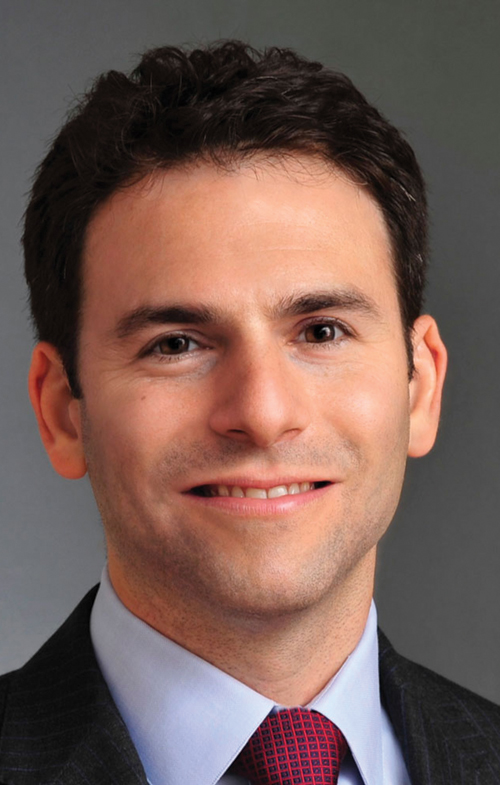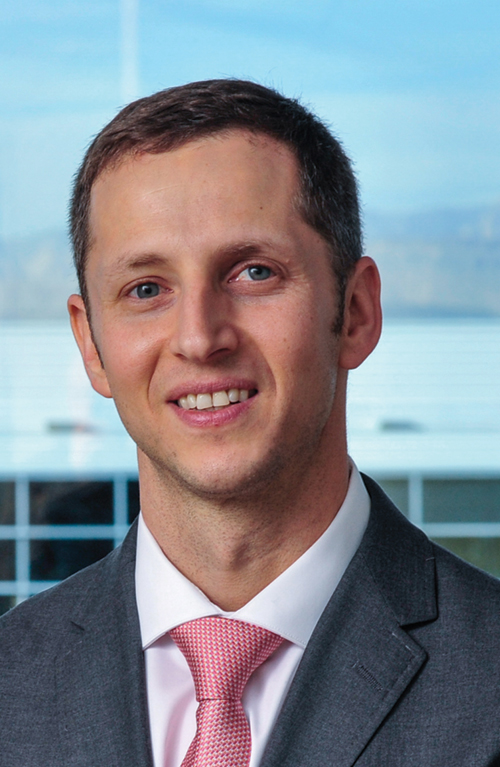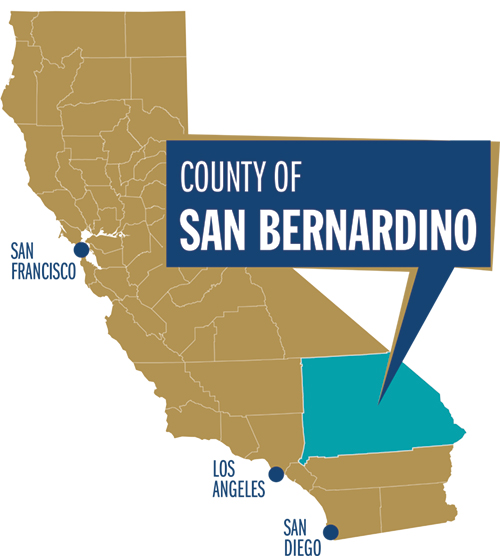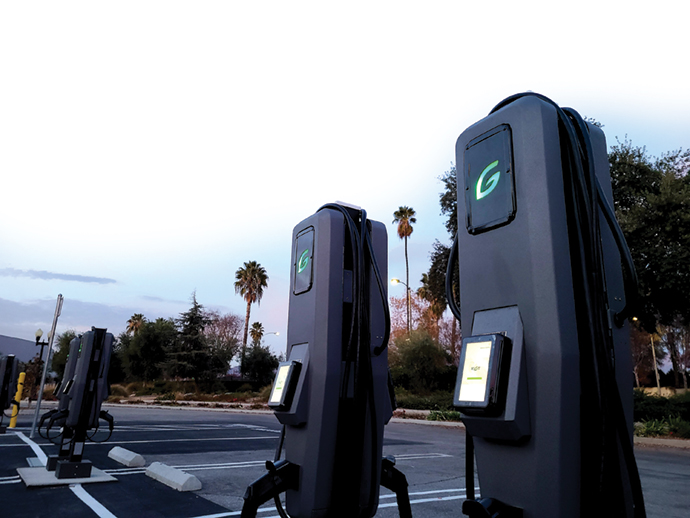The next time you ride in an electric vehicle, you may want to consider who made the trip possible. There’s a good chance it was built or sourced in San Bernardino County, California.
While Tesla has become synonymous with Fremont in Northern California, an entire supply chain of electric transportation infrastructure is rising in San Bernardino County, a 20,000-square-mile area of the Inland Empire in Southern California. Stretching from just east of Los Angeles to the Arizona border, this vast region of 2.2 million people is developing a reputation as a destination for firms engaged in EV work.
Whether it’s designing and building electric shuttle buses for airport passengers, rolling out electric charging stations around the country, or mining the rare earth minerals essential to producing the lithium-ion batteries that power EVs, San Bernardino County has become a bastion of the knowledge and muscle required to make these things happen.

Silicon Valley, meet Lithium Lane. While places like Fremont, San Francisco and Palo Alto have become known for developing the breakthrough technology that powers EVs, fancy rigs like the Tesla Cybertruck and the GMC Hummer EV Supertruck won’t get far down the road without the infrastructure emanating from San Bernardino County.
Paul Francis, CEO of Ontario-based KIGT, runs a 100% minority-owned company that’s on the fast track to distributing charging stations for electric vehicles around the country. KIGT is an electric charging station manufacturer that also creates the operating software.
Francis says his product’s value proposition is straightforward. KIGT helps plug-in car drivers save time and money by providing faster charging times at home. A little over a year ago, KIGT received a grant from the Inland SoCal Link iHub to enhance technical innovation.

“The whole past year has been booming for our industry,” says Francis a serial entrepreneur whose career has taken him to Honolulu, Las Vegas, San Diego and now Ontario in San Bernardino County. “Private equity did not stop investing in companies like ours. We received a grant from the California Energy Commission (CEC) for electric charging. And we even signed our largest deal to date in 2020, with Southern California Edison. They selected different manufacturers for charging stations for EVs, and we were one of them.”
KIGT was one of just two suppliers selected by SCE. “We are doing multiple charging sites for the largest electric utility company in California,” says Francis. “That is really cool. It means we get to eat for the next eight years. We can leverage this award to get contracts with other utilities. We believe we can reach over a million dollars in revenue this year. We hired 10 people last year, and we have some pretty aggressive goals.”
Those goals include rolling out a million charging stations at residences nationwide by 2025 and 100,000 commercial charging stations by 2025. “Our goal is to have a minimum of 1,000 commercial contracts delivered,” Francis notes. “We also received a grant from the CEC to develop wireless charging and vehicle-to-grid charging. We plan to grow our multi-family market and single-family market with both distributors and auto manufacturers.”
A Phoenix Rises
Among those collaborators is Phoenix Motorcars, which is also based in Ontario. Founded in 2003, Phoenix initially focused on making electric pickup trucks. It has since pivoted and now aims to supply the growing demand for fleets of electric shuttle buses and trucks.
The firm moved to Ontario in 2007 and has not looked back since, says Jose Paul Plackal, vice president for business development and marketing for Phoenix Motorcars. “New ownership and management took over in 2009, and we made a lot of changes,” he says. “We like the fact that we are very close to two major hubs in Southern California. We are an hour from Los Angeles and one-and-a-half hours from San Diego.”
Plackal notes that “Ontario was becoming a key inland transportation hub around that time. We saw the growth of Ontario International Airport as a logistics hub. This placed us close to a lot of EV and ancillary support businesses in L.A., Irvine and San Diego.”

Combined with proximity to several key customers, along with multiple incentives for both public transportation fleets and corporate fleets to go electric, “it was the right time for our new ownership to change focus from light-duty vehicles to medium-duty vehicles,” says Plackal. “One of our first customers was the U.S. Air Force Base nearby. We also have customers in Colton, Redlands and other cities in San Bernardino County.”
A driving factor in Phoenix Motorcars’ success is its ability to recruit top talent, says Plackal. “We are building a workforce around us,” he says. “Some people commute from other places, but most of our resources are based in Ontario and neighboring cities. We are now looking to expand in either Ontario or another city close by. By doing that, we can continue to benefit from the network around us. We can grow without having to pay the cost of real estate and the cost of labor on the coast. Being here has helped us keep our costs down.”
Operating in a capital-intensive business, Phoenix recognized a need to secure more funding and did so recently with an infusion of money from SPI Energy. “They bought a 100% interest in Phoenix Motorcars,” says Plackal. “We are now a wholly owned subsidiary of SPI.”

Phoenix also maintains an engineering facility in nearby Chino. “As we grow, we are looking to expand our workforce,” he adds. “We have hired veterans from Tesla and other more traditional OEMs like Ford. We are ramping up our expertise and growing our business. We are looking to increase our footprint in the Inland Empire. We are at 50 to 60 people now, and we are looking to replicate our success in the Midwest and Florida to be close to our customers.”
California’s recently enacted Green Transit Legislation, Airport Shuttle Regulation and Zero Emission Truck Legislation are all playing a major role in shifting customers toward EVs, notes Plackal. “By 2035, almost all new vehicles sold in California will have to be electric,” he says. “By 2035, 75% of all new commercial trucks sold in California must be electric. That will require a lot of investment in manufacturing of electric trucks in California. There are about 15 states that are following California on green truck regulations. Our goal is to ramp up production so that we ultimately can satisfy this new demand for EVs.”
Mining the Future on a Mountain
As more fleets and motorists shift to EVs, increasing demand is being placed on the rare earth minerals needed to manufacture the batteries, motors and computers used in EVs.
That’s where MP Materials comes into play. Located along Interstate 15 in Mountain Pass about 15 miles from the Nevada border, MP Mine Operations LLC purchased this rare earth mine in 2017 and is operating it to fill an important role in the global economy.

Only 30 people live there, but the mine employs 300 workers that deliver 15% of the global supply of rare earth elements. “Mountain Pass is one of the world’s highest-quality rare earth deposits,” says James Litinsky, Founder, Chairman and CEO of MP Materials. “The mine started production in 1952 and was the dominant global source of rare earth minerals through much of the 1990s. More recently, Chinese production has grown to dominate global supply, and following the closure of Mountain Pass operations by our predecessor in 2015, rare earth mining and processing had ceased entirely in the United States.”

MP Materials acquired Mountain Pass in 2017 and invested considerable capital to bring it back into operation. Today, Mountain Pass is the only rare earth mining and processing site of scale in the Western Hemisphere.
“Over the next year, we expect to create an additional 200 direct jobs and 1,000 indirect construction jobs in San Bernardino County,” says Litinsky. “We are also preparing to make approximately $200 million of capital investments at Mountain Pass over the next year.”
Average compensation at the mine is over $75,000 a year. MP’s aggressive hiring plans should increase employment on site to over 400 by next year.
Michael Rosenthal, chief operating officer of MP Materials, says that San Bernardino County government has been an instrumental partner in the ramp-up. “San Bernardino County is our primary regulator and has provided essential support that enabled us to move swiftly to restart, optimize and expand our operations,” he says. “We are particularly grateful for the county’s assistance with permitting and records recovery. They serve as a valuable liaison between our operation and state and federal government officials.”
For now, MP is prioritizing production of Neodymium-Praseodymium (NdPr), which is used to produce high-strength permanent magnets that power the traction motors found in electric vehicles, robotics, wind turbines, drones and other advanced motion technologies. Litinsky notes that “global demand for NdPr-based permanent magnets is projected to grow exponentially as transportation is electrified and energy production is decarbonized.”
This Investment Profile was prepared under the auspices of San Bernardino County government. For more information, contact the county Economic Development Department at 909-387-4700. On the web, go to www.SelectSBCounty.com.

